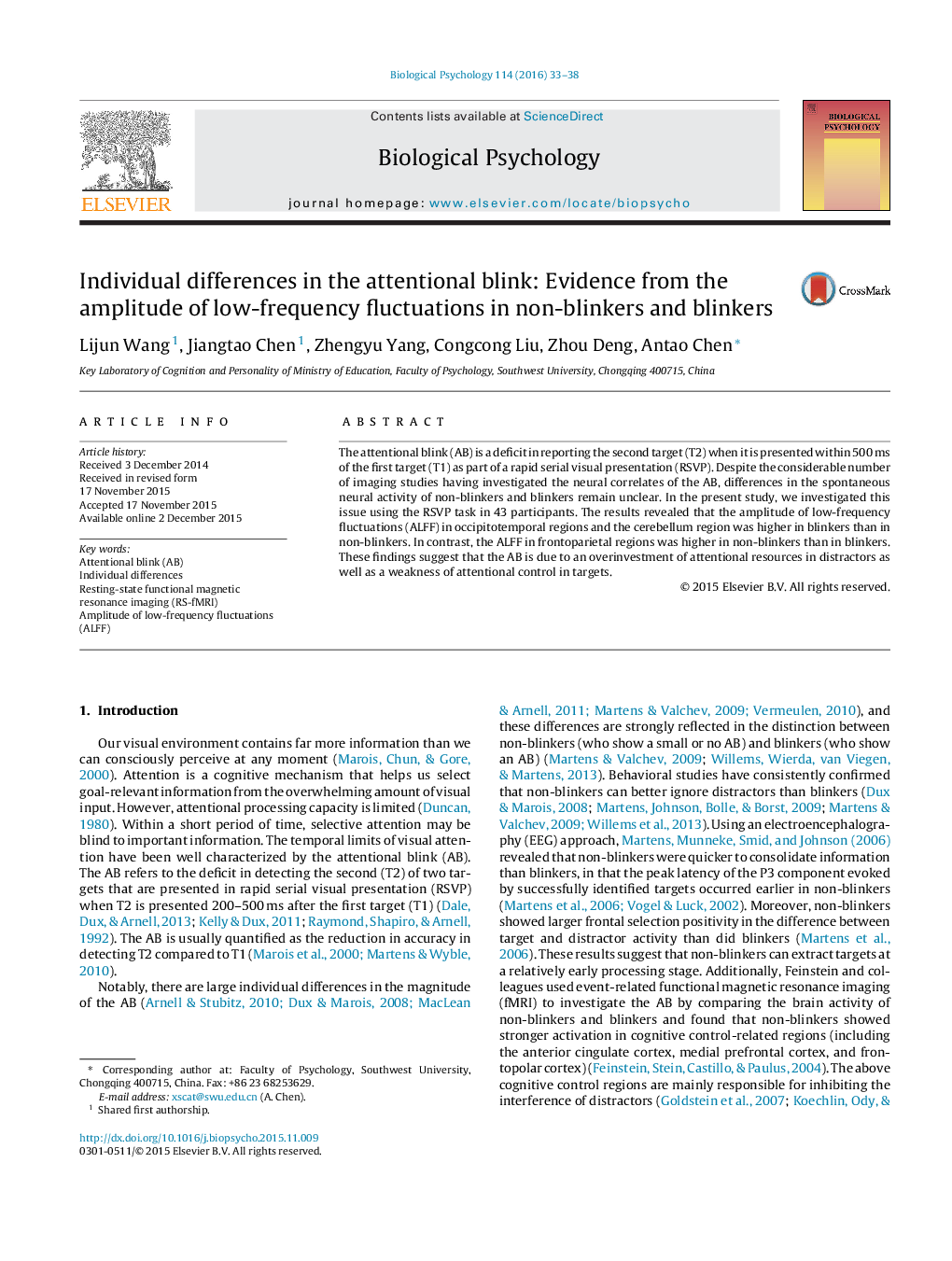| Article ID | Journal | Published Year | Pages | File Type |
|---|---|---|---|---|
| 7278493 | Biological Psychology | 2016 | 6 Pages |
Abstract
The attentional blink (AB) is a deficit in reporting the second target (T2) when it is presented within 500Â ms of the first target (T1) as part of a rapid serial visual presentation (RSVP). Despite the considerable number of imaging studies having investigated the neural correlates of the AB, differences in the spontaneous neural activity of non-blinkers and blinkers remain unclear. In the present study, we investigated this issue using the RSVP task in 43 participants. The results revealed that the amplitude of low-frequency fluctuations (ALFF) in occipitotemporal regions and the cerebellum region was higher in blinkers than in non-blinkers. In contrast, the ALFF in frontoparietal regions was higher in non-blinkers than in blinkers. These findings suggest that the AB is due to an overinvestment of attentional resources in distractors as well as a weakness of attentional control in targets.
Related Topics
Life Sciences
Neuroscience
Behavioral Neuroscience
Authors
Lijun Wang, Jiangtao Chen, Zhengyu Yang, Congcong Liu, Zhou Deng, Antao Chen,
